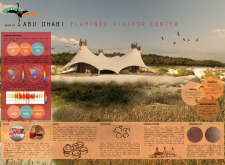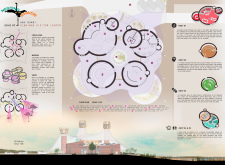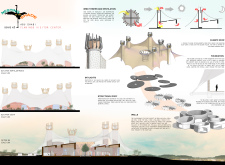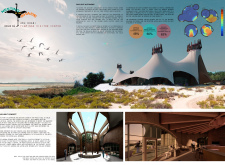5 key facts about this project
The building's concept derives from the shape and nesting habits of flamingos, manifesting in a structure that consists of a series of interconnected forms. This modular design allows for flexibility in use while catering to both functional needs and aesthetic considerations. The emphasis on natural ventilation, light, and local material selection underlines the project's commitment to environmental sustainability.
Innovative Design Approaches
The architectural approach incorporates several unique features that distinguish it from conventional visitor centers. The use of ethylene tetrafluoroethylene (ETFE) in the roof structure permits natural light and reduces heat gain, essential for comfort in the region's climate. Additionally, wind towers designed into the building capture and funnel breezes to enhance natural cooling, minimizing reliance on mechanical systems.
The layout prioritizes visitor experience, beginning with an open atrium that leads to exhibition spaces, educational rooms, and social areas such as a café. Each space is designed to foster interaction, reflection, and a deeper connection to nature. The careful organization enables a flow that facilitates exploration and discovery, essential for education-focused tourism.
Sustainable Material Selection
The choice of materials reflects the project's ecological intent. Local materials such as coral stone and brick are used to establish a connection to the environment, ensuring the building blends into its surroundings. Reinforced concrete provides structural support, while the extensive use of glass minimizes barriers between indoor and outdoor spaces. This reinforces the project's educational mission, allowing visitors to experience the wetlands' biodiversity firsthand.
For further insights into the architectural plans, sections, and overall design strategies of the Abu Dhabi Flamingo Visitor Center, readers are encouraged to explore the project's presentation. There, one can delve deeper into the architectural ideas and functional elements that define this significant addition to the Abu Dhabi landscape.


























